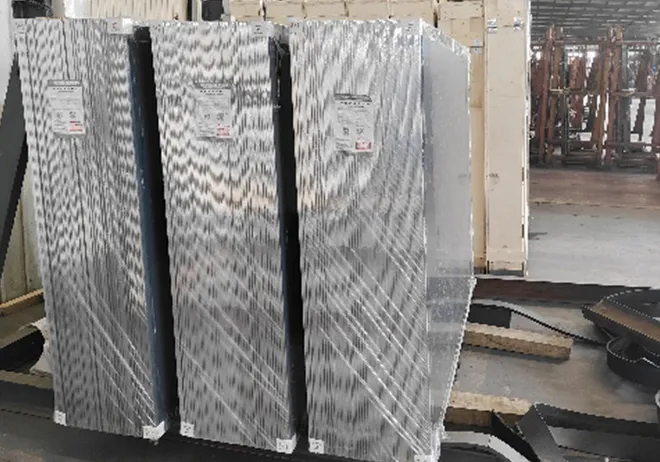Nov . 09, 2024 15:09 Back to list
Cost Analysis of Tempered Glass Panel Production and Installation
The Cost of Tempered Glass Panels An Overview
Tempered glass, also known as toughened glass, is a popular choice for various applications due to its strength, safety, and thermal resistance. Commonly used in buildings, automotive industries, and interior design, tempered glass panels provide an ideal combination of aesthetics and functionality. However, understanding the cost structure of tempered glass panels is crucial for homeowners, builders, and architects alike.
What is Tempered Glass?
Tempered glass is produced through a process of extreme heating followed by rapid cooling. This process increases the strength of the glass and makes it less prone to breakage compared to regular glass. When tempered glass breaks, it shatters into small, blunt pieces rather than sharp shards, reducing the risk of injury. These properties make it a preferred choice for applications like shower doors, glass railings, and storefront windows.
Factors Influencing the Cost
Several factors affect the pricing of tempered glass panels. Understanding these can help consumers make informed decisions when purchasing or specifying tempered glass for their projects.
1. Thickness The thickness of the glass panel significantly impacts its cost. Common thicknesses range from 3mm to 19mm. Thicker panels typically provide greater strength and insulation but come with a higher price tag. For instance, a 10mm panel may cost significantly less than a 19mm panel, depending on the supplier and intended use.
2. Size Larger tempered glass panels not only provide aesthetic appeal but also can be more expensive. The cost escalates because larger sheets result in higher material use, increased transportation costs, and potential waste during production.
3. Customization Many consumers opt for custom-cut tempered glass panels to fit unique spaces. Customization can include specific shapes, sizes, and finishes, such as frosted or tinted glass. Custom features usually drive up the overall cost due to added labor and manufacturing complexity.
cost of tempered glass panels

4. Coating and Treatments Additional treatments, such as low-E (low emissivity) coatings that enhance thermal efficiency or special reflective coatings that reduce glare, can also increase the price. These enhancements often come with added benefits, such as energy savings or improved comfort in indoor environments.
5. Supplier and Source The source of the tempered glass can affect pricing as well. Local suppliers may offer different price points based on availability and overhead costs. Importing glass from overseas can incur additional shipping and import fees, which can raise the overall cost.
6. Demand and Market Trends Like many products, the cost of tempered glass panels can fluctuate based on market demand. During periods of high construction activity or economic growth, the demand for tempered glass can increase, potentially leading to higher prices.
Average Pricing
On average, the cost of tempered glass panels can range between $8 to $30 per square foot, depending on the factors mentioned above. For instance, a standard 10mm thick, clear tempered glass panel measuring 4 feet by 6 feet may range from $192 to $720. Specialty options, such as laminated tempered glass or those with custom coatings, can significantly increase this price point.
Conclusion
Understanding the cost of tempered glass panels involves considering multiple influencing factors, from thickness and size to customization and market conditions. As tempered glass continues to be a sought-after material in various applications, recognizing these factors can help consumers and professionals make cost-effective choices that align with their project needs. Budgeting for tempered glass should also consider installation costs, as proper installation is crucial for ensuring the maximum benefit and safety of the product.
In summary, while tempered glass may represent a higher initial investment compared to standard glass, its durability, safety features, and aesthetic appeal make it a valuable option for many applications, ultimately justifying its cost.
-
Safety and Style with Premium Laminated Glass Solutions
NewsJun.24,2025
-
Reinvents Security with Premium Wired Glass
NewsJun.24,2025
-
Premium Float Glass Line for Modern Architecture
NewsJun.24,2025
-
Low Emissivity Glass for Energy-Efficient Architecture
NewsJun.24,2025
-
High-Performance Insulated Glass Solutions for Modern Architecture
NewsJun.24,2025
-
Elevates Interior Style with Premium Silver Mirror
NewsJun.24,2025
Related PRODUCTS














